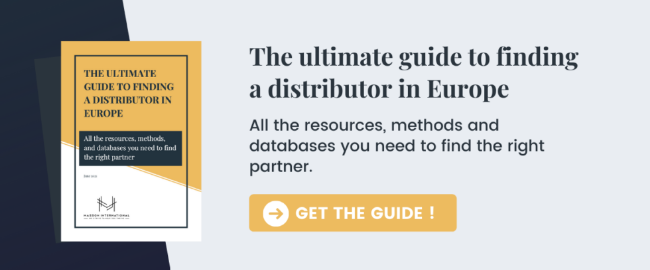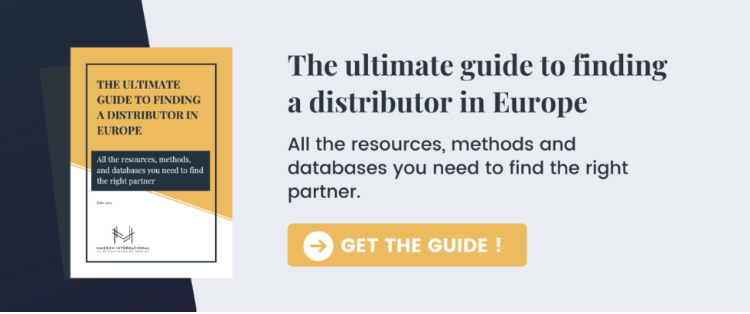|
Summary
Distributor Margins and Markups – How They Affect Your Costs Additional Costs to Factor In When Working With a Distributor |
Working with a distributor can be a powerful way to expand into new markets — but how much does it cost to work with a distributor? From margins and markups to marketing budgets, travel, and listing fees, the costs can vary greatly depending on your industry, sales volume, and target market.
In this guide, we break down the main cost components, average margins, and extra expenses you should plan for, so you can budget effectively and maintain healthy profitability.
PS: We have also written a comprehensive article on the advantages of using a distributor.
Distributor Margins and Markups – How They Affect Your Costs
The margin is the first term to comprehend when it comes to arriving at strategic prices for distributors. A margin is simply the percent of (profit-making) difference between the cost price and the selling price of a product. Margins are an important concept in business because no one (manufacturer, distributor, or retailer) would make a profit without them.
A distributor’s margin is not only determined by the cost of the manufacturer’s product but also by other variables like customer demand, quantity supplied, transportation costs involved in distributing the products, maintaining a fleet of automobiles, storing the products in a warehouse, international tariff payments, and more. All these costs impact the distributor’s final margin and may further complicate the size of the profit in a distributor's pricing strategy.
A distributor markup occurs when distributors increase the selling price of their products for the purpose of covering their own costs while also making some profit. For a product manufacturer, this isn’t a cost but rather a profit percentage you leave to your distributor or sales agent for them to sell the product on your behalf. Whether margin or markup, the distributor or sales agent is also expected to consider the suggested retail price of the product.
Therefore, in a typical supply chain involving the manufacturer, the distributor, plus eventually a retailer, one crucial challenge is marking up prices so that all parties make the kind of profit that helps them stay competitive. Markups tend to vary most with distributors. Ideally, their preference is to purchase high volumes of products from producers in order to keep prices low. However, not all distributors can always afford such luxury. In a nutshell, distributor markups help ensure the smooth and efficient functioning of every level of the supply chain.
So how much does it cost to work with a distributor?
The average B2B distributor markup, selling directly to the end user, is usually between 30%-40%. However, this percentage range is indicative and depends on the industry you’re in, the volume of sales, and the end user price (which can differ according to final purchase place, e.g., direct purchase, small retailers, medium-sized stores, big supermarkets, etc.).
The average markup for a sales agent ranges from 10%-15%. Similar to the B2B distributor markup, this percentage is also indicative, and is dependent on the industry you’re operating in, the volume of sales, the intermediaries, and the end user price.
This article might interest you ⤵️
Additional Costs to Factor In When Working With a Distributor
Cost considerations are very important when striving for profitability as a manufacturer. Marketing budget, traveling budget, exhibitions budget, and listing fees are some costs a producer may incur while distributing his or her company’s products. All four costs are briefly discussed below:
Marketing Budget
A marketing budget is an outline of the costs a company proposes to incur in brand, product, and/or service promotion. It encompasses all the expenses of your marketing strategy over a specified period (such as a quarter, six months, or one year).
To work with distributors, we recommend giving them a marketing budget for things like paying for small exhibitions, printing your brochures and catalog, and publishing your ads. This marketing budget could be linked to sales goals. If you are working with the distributor for the first time, prepare to send them free samples, free demo products, and free promotional gifts (pens, notepads, mugs, etc.) to help build confidence and establish a working relationship.
Traveling Budget
Some product makers may like to visit their distributors regularly. Expenses that will be incurred here include plane tickets, hotels, food, etc., all of which you have to factor into your annual costs. The first reason you might want to visit your product distributor, who’s probably located thousands of kilometers (miles) away, is to build a stronger relationship with them. Face-to-face discussions are often the best way to become familiar with each other’s expectations and requirements without the need to rely so much on repeated phone calls and emails.
You may also want to use the opportunity to assess the cleanliness, suitability, and organization of storage facilities to determine if conditions in such facilities will enable the distributor to deliver the product effectively.
Exhibitions Budget
While you want to leave the small exhibitions to be covered by your distributors, the large main exhibitions covering a whole country or continent will need to be covered directly by you. For instance, you may want to leave the organization and booth setup of a small French exhibition to your French dealer (price-wise and booth-wise). But you’ll need to pay for yourself and install your own booth for a European exhibition in Germany, where all the European distributors and clients will come.
Listing Fees (B2C products: supermarkets, e-commerce)
When a business, such as a manufacturer, intends to sell or distribute products through a retail marketplace, they may be charged for putting up their products on the shelves, the site or the catalog. This charge is called a listing fee or insertion fee. Some good examples include major supermarkets brands, e-commerce sites like Amazon and online auction sites like Catawiki. Listing fees vary, but sometimes the fee can be 1% of sales revenues, which has to be paid yearly to the retailer.
For example: Amazon USA has a plan where you’ll pay $0.99 each time you sell a product and another plan that costs $39.99 per month, no matter the number of items you sell. For both plans, Amazon also charges a referral fee on each sale. This referral fee is a percentage of the total transaction and varies by product category.
Conclusion
In a price-based system, the question of how much it costs to work with a distributor is not only determined by how much distributors buy products from manufacturers but also by the basic economics of supply (quantity available), demand (quantity needed), cost of operations involved (logistics, marketing, listing fees…) and more.
Because of such changing dynamics, it’s vital for distributors to always have a clearly defined margin and a markup pricing strategy that takes cognizance of the suggested retail price of a product. Even with a lack of ability to predict certain situations and their likely impact on pricing, developing a comprehensive pricing strategy that takes note of parameters that ensure profitability, reliability, and flexibility will be beneficial to manufacturers like you.
Masson International helps manufacturers identify, qualify, and negotiate with distributors in France, Switzerland, and Belgium — ensuring your margins stay healthy. Ready to expand with the right distributor?
Frequently Asked Questions About Distributor Costs
What is a typical distributor margin?
In B2B, distributor markups are often between 30% and 40%, but they can vary depending on the industry, sales volume, and end-user pricing.
Do I have to cover my distributor’s marketing costs?
Often, yes — especially for product launches or new market entries. Many manufacturers provide a marketing budget for local promotions, small exhibitions, or branded materials.
How can I reduce costs when working with a distributor?
Negotiate clear sales targets, share marketing responsibilities, and plan visits efficiently to reduce travel and promotional expenses.
Are listing fees negotiable?
Sometimes. While large retail chains often have fixed fees, you may negotiate them down or offset them with marketing commitments.
What’s the difference between a distributor and a sales agent in terms of cost?
Sales agents typically take a lower commission (10–15%) compared to distributor margins (30–40%), but they don’t purchase stock — they sell on your behalf.








